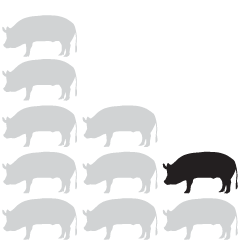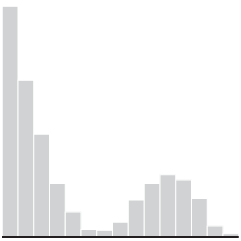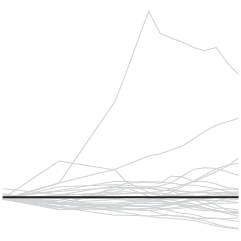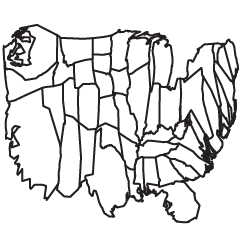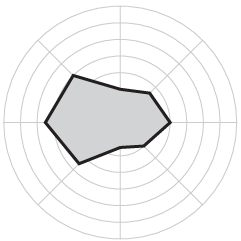This seems like fun. The NodeJS package shp2stl by Doug McCune lets you convert a shapefile to a 3-D model, which can then send to your favorite 3-D printer (because you know we all have at least two of them lying around). Assuming you have NodeJS setup, simply point the package to your shapefile, specify which attribute to use for height, and presto changeo there’s your 3-D model.
-
In efforts to emphasize the importance of the library (very), the British Library released a video that simply shows ten minutes of book checkouts. Nothing fancy. Just an updating log of activity — and yet there’s something mesmerizing about it.
Read More -
It’s been known for decades that the sounds that whales make show patterns and have a certain musicality to them. David Rothenberg and Mike Deal talk about the history of visualizing and analyzing the sounds, along with a visual interpretation of their own.
Read More -
The way that people get around can say a lot about how a place is made up. Here’s an interactive map that shows how people get to work in America.
-
When you look at overall global temperatures over time, you see a rising line and new heat records set. Instead of just one line though, Tom Randall and Blacki Migliozzi for Bloomberg split up the time series by year and animated it.
Each year is overlaid on top of the other with a new time series in each frame. The dotted line rises too as new records are set, and as time passes, the older time series lines fade to the background.
You still get the rising effect as you would with a single time series over the past 135 years, but this view provides more focus to the increase, closer to present time.
-
When it comes to storytelling, copious amounts of data often means lots of charts. Sometimes though, a chart isn’t what you need. Sarah Slobin, a graphics editor for the Wall Street Journal, talks about such an experience. The urge was to chart all the things, but in the end, there was a better route.
Losing the graphics made sense to all of us on the project. What worked best for the story won out, as it should. We didn’t need graphics for the sake of graphics, especially graphics that weren’t working in service of the piece. And photos, while not numbers, are also data in their own right. My own internal calculus, data = charts, was based on habit and that habit had become like armor over time, I put it on without thinking before trudging off to battle. So now, at the outset of each project, I’m working on learning to be really honest with myself each time I sort through a set of statistics; “What does the reader really need here?” Not, “What cool thing can I do with these data?”
-
If you ever wondered what it looks like when QWOP-like figures learn to walk through mutation as dictated by a simplified genetic algorithm, here’s your answer. Rafael Matsunaga made a simulation that starts with a bunch of walkers, and the one that stays upright the longest moves on to the next generation. Adjust the probability of mutation and the amount, and there’s a chance the next generation of walkers could go further.
See also genetic algorithm cars. Same idea but with blocky car-like figures. [via kottke]
-
A short post on Bloomberg from 2013 describes the fall of U.S. mens’ income for the past forty years. To illustrate, the author uses the chart above, and we’re like, “Oh gee willikers, that sure is a big drop in income. I guess mens’ income is well on its way to zero dollars. Gosh darn it to heck.”
But maybe we’re riled up for nothing.
Eric Portelance takes a small step back to see what’s going on in this simple chart. It’s the classic case of cherry-picked data points, less attention to axes, and ignoring the details.
-
With Google’s image search, the results kind of exist in isolation. There isn’t a ton of context until you click through to see how an image is placed among words. So, researchers at Google are trying an approach similar to how they translate languages to automatically create captions for the images.
Now Oriol Vinyals and pals at Google are using a similar approach to translate images into words. Their technique is to use a neural network to study a dataset of 100,000 images and their captions and so learn how to classify the content of images.
But instead of producing a set of words that describe the image, their algorithm produces a vector that represents the relationship between the words. This vector can then be plugged into Google’s existing translation algorithm to produce a caption in English, or indeed in any other language. In effect, Google’s machine learning approach has learnt to “translate” images into words.
-
Data-Driven Documents, or D3.js, is a flexible JavaScript library that lets you draw and move things in the browser. If it isn’t yet, it’s on its way to becoming the tool of choice for visualization on the web. It’s important to remember though that the library isn’t just for charts, graphs, and maps (although those things are nice). Case-in-point is John Firebaugh’s new project to make one animated art piece a day.
-
Tommy Caldwell and Kevin Jorgeson are free-climbing almost 3,000 feet up El Capitan, basically with their fingers. The New York Times shows the ascent with a route placed on top of a 3-D model. Scroll in a WebGL-enabled browser on the biggest screen possible for a smidgen of feeling for what the climb is like.
See also Caldwell’s Facebook page for some amazing pictures of what they’ve experienced so far.
Update: The Times just published a high-res image of the wall. Click on the links in the caption to see Jorgeson, but a tiny speck.
-
I’m glad podcasts are a thing right now. Talking Machines is a new podcast on machine learning, statistics, and data, hosted by journalist Katherine Gorman and computer science professor Ryan Adams. One “Hello, world” episode in, it seems promising. Sometimes these technical podcasts get lost in jargon, which gets old fast, but I think they’re working towards a good balance.
-
In Invasion of America, an animated map shows the loss of land.
Read More -
Working with Map Projections and Shapefiles in R
No need to settle for the mapping defaults in R. Apply map projections to show geographic data in a way most suitable for your work.
-
This amused me. By artist Christo Allegra.
-
Gabriel Rossman, a sociology professor at UCLA, describes colliders — or when correlation does not equal causation and the former might not even exist either. Referring to the simulated plot above, Rossman uses Hollywood actor selection as an example:
For instance, suppose that in a population of aspiring Hollywood actors there is no correlation between acting ability and physical attractiveness. However assume that we generally pay a lot more attention to celebrities than to some kid who is waiting tables while going on auditions. That is, we can not readily observe people who aspire to be actors, but only those who actually are actors. This implies that we need to understand the selection process by which people get cast into films. In the computer simulation displayed below I generated a population of aspiring actors characterized by “body” and “mind,” each of which follows a normal distribution and with these two traits being completely orthogonal to one another. Then imagine that casting directors jointly maximize talent and looks so only the aspiring actors with the highest sum for these two traits actually get work in Hollywood. I have drawn the working actors as triangles and the failed aspirants as hollow circles. Among those actors we can readily observe there then will be a negative correlation between looks and talent, even though there is no such correlation in the grand population. If we see only the working actors without understanding the censorship process we might think that there is some stupefaction of being ridiculously good-looking.
-
In 1974, NASA published their first satellite photo of the contiguous United States by stitching together a bunch of individual images.
A giant photo map of the contiguous 48 states of the United States, the first ever assembled from satellite images, completed for NASA by the U.S. Department of Agriculture Soil Conservation Service Cartographic Division. The map is 10 by 16 feet, is composed of 595 cloud-free black-and-white images returned from NASA’s first Earth Resources Technology Satellite (ERTS-1). The images were all taken at the same altitude (912 kilometers: 560 miles) and the same lighting angle. The images were produced by the spacecraft’s Multi-spectral Scanner System (MSS) in Band 5, or the red portion of the visible spectrum, during the period July 25 to October 31, 1972.
-
You get older as time passes. (That’s how age works last time I checked.) You change, the people around you change, and you care more about different things and less about others. Cecilia Rabess describes the difference a decade makes in a series of humorous charts.
It’s funny because it’s true.
Excuse me while I get an IcyHot pack for my lower back and schedule an eye appointment. And why do they have to play that music so darned loud? [via @albertocairo]
-
 I started working through Arduino Workshop by John Boxall over the holidays, and it’s a lot of fun so far. I highly recommend it if you’re thinking about getting into Arduino projects and you’re brand new to this stuff.
I started working through Arduino Workshop by John Boxall over the holidays, and it’s a lot of fun so far. I highly recommend it if you’re thinking about getting into Arduino projects and you’re brand new to this stuff. From the book description:
You’ll start off with an overview of the Arduino system but quickly move on to coverage of various electronic components and concepts. Hands-on projects throughout the book reinforce what you’ve learned and show you how to apply that knowledge. As your understanding grows, the projects increase in complexity and sophistication.
I’m a little under halfway through, but that sounds right so far. I’ve been able to do all the projects with the hardware that came with the official Arduino Starter Kit, with a small adjustment for one project.
Read More -
It’s hard to predict the future, especially when humans are involved. Oftentimes, there are just too many variables to control for to estimate accurately. In the chart above from the Washington Post Wonkblog, Japan’s fertility rate is plotted against various forecasts over the years, and you see forecasts headed upwards, but in reality it decreased consistently since the 1970s. This is based on work from Katagiri, et al (pdf).
See also a similar porcupine chart from Amanda Cox in 2010 that compared US deficit against forecasts.


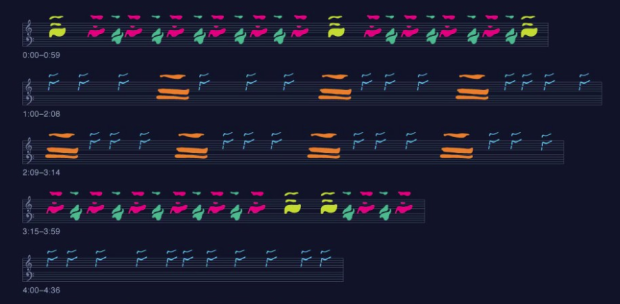



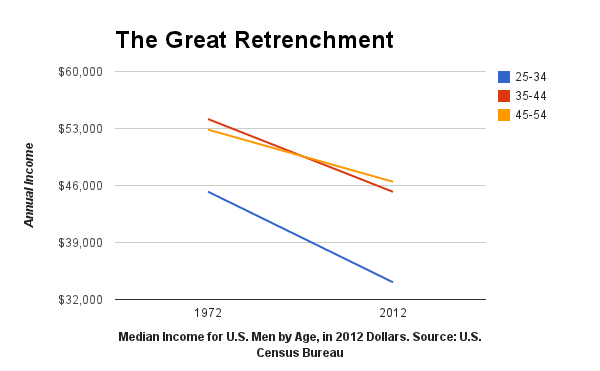




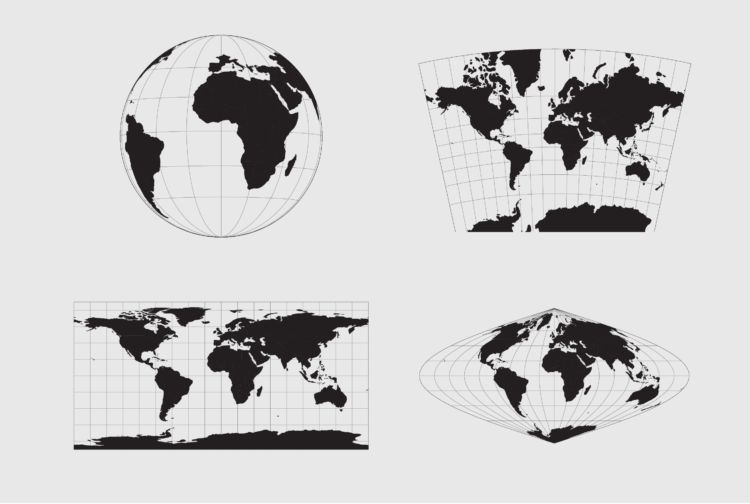
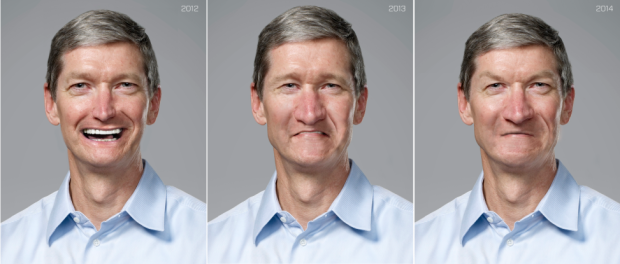

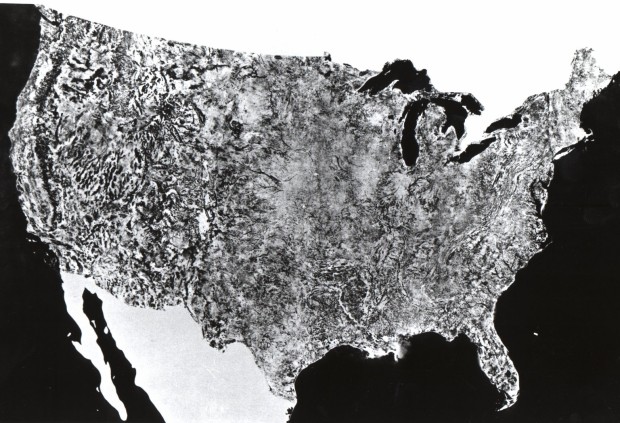
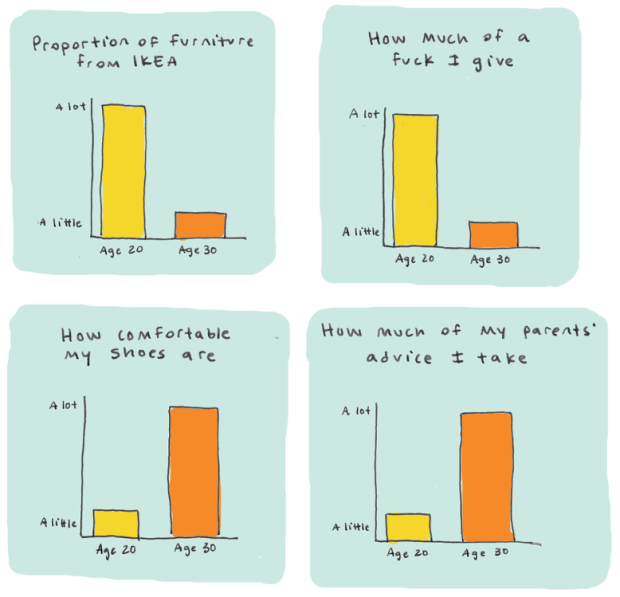

 Visualize This: The FlowingData Guide to Design, Visualization, and Statistics (2nd Edition)
Visualize This: The FlowingData Guide to Design, Visualization, and Statistics (2nd Edition)
